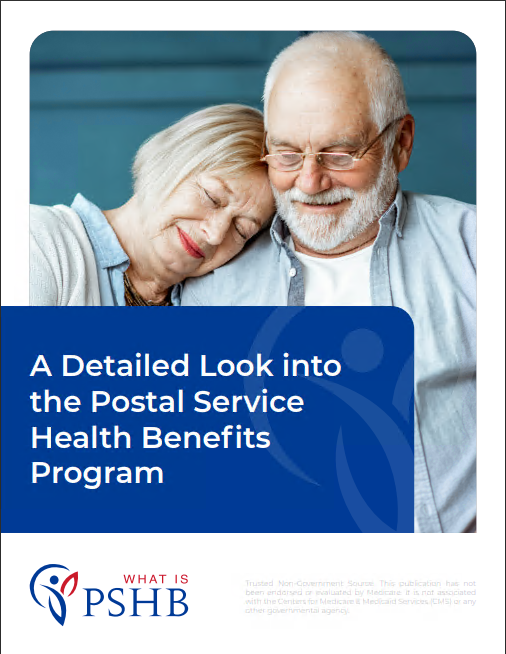Key Takeaways
-
Understanding your family’s health needs is essential when selecting a health plan that balances comprehensive coverage and affordability.
-
Comparing different types of plans and their benefits will help you find the best option for your postal family in 2025.
Choosing the Best Health Plan for Your Postal Family: A 2025 Guide
Choosing the right health plan for your postal family in 2025 is more crucial than ever. With the healthcare landscape continually evolving, it’s essential to be informed and prepared. Whether you’re dealing with new health challenges or planning for future medical needs, having a solid understanding of your options can make all the difference. This guide will walk you through the key considerations and steps involved in selecting the best health plan for your family, ensuring that you have the coverage you need without unnecessary costs or complications.
Assessing Your Family’s Healthcare Needs
Before diving into the various health plan options available, it’s important to assess your family’s specific healthcare needs. Consider the following:
-
Current Health Status: Are there ongoing medical conditions in your family that require regular doctor visits, medications, or specialized care? For instance, chronic conditions like diabetes or asthma can lead to frequent medical expenses.
-
Planned Medical Services: Are any family members expecting to undergo significant medical procedures, such as surgery or maternity care? Planning ahead for these needs can prevent unexpected out-of-pocket costs.
-
Preferred Healthcare Providers: Does your family have established relationships with specific doctors or hospitals? If so, ensuring these providers are in-network with the plan you choose is crucial to avoid higher costs.
-
Prescription Medication Needs: Make a list of any regular prescriptions your family takes. Understanding how these are covered under different plans will help you avoid surprises at the pharmacy.
By thoroughly evaluating these factors, you can begin to identify the type of coverage that will best meet your family’s needs.
Understanding Health Plan Types
The next step is to familiarize yourself with the different types of health plans available to postal workers and their families. Here’s a breakdown of the most common types:
Health Maintenance Organization (HMO)
HMOs are known for their focus on preventive care and lower premiums. However, they require members to use a network of doctors and hospitals. If you choose an HMO, you’ll need to select a primary care physician (PCP) who will coordinate your care and refer you to specialists as needed. This option works well for families who don’t mind having a smaller network of healthcare providers and want to keep costs predictable.
Preferred Provider Organization (PPO)
PPOs offer more flexibility in choosing healthcare providers. You can see any doctor or specialist without a referral, and there’s often a broader network of providers. While premiums and out-of-pocket costs may be higher than with an HMO, a PPO plan is ideal if your family values the freedom to choose their healthcare providers.
High Deductible Health Plan (HDHP)
An HDHP is characterized by lower premiums and higher deductibles. This type of plan is often paired with a Health Savings Account (HSA), which allows you to save pre-tax dollars to pay for qualified medical expenses. HDHPs are suitable for families in good health who don’t expect to need frequent medical care but want to be protected against major expenses.
Exclusive Provider Organization (EPO)
EPOs combine features of HMOs and PPOs. Like an HMO, you’re required to stay within a network for your care, but like a PPO, you can see specialists without a referral. EPOs typically have lower premiums than PPOs but don’t cover any out-of-network care except in emergencies.
Point of Service (POS)
POS plans are a hybrid of HMO and PPO plans. They require you to choose a primary care physician and get referrals to see specialists, like an HMO. However, you also have the option to go outside the network for care, but at a higher cost. This plan could be a good middle ground for families wanting some flexibility but also looking to control costs.
Evaluating the Costs
Understanding the financial aspects of health plans is vital. When comparing plans, focus on these key cost components:
-
Premiums: This is the monthly amount you pay to keep your coverage active. It’s important to balance premium costs with other out-of-pocket expenses to avoid being underinsured or overpaying.
-
Deductibles: This is the amount you must pay out-of-pocket before the insurance starts covering medical expenses. Families with low healthcare needs might prefer a higher deductible plan with lower premiums.
-
Co-payments and Coinsurance: Co-pays are fixed amounts you pay for services, while coinsurance is a percentage of the cost. These costs can add up, especially for families with frequent medical visits, so understanding these terms is crucial for budgeting.
-
Out-of-Pocket Maximum: This is the most you’ll pay in a year before your insurance covers 100% of your medical expenses. Knowing this limit helps protect your family’s finances from unexpected health costs.
By analyzing these costs, you can make an informed decision that balances your family’s health needs with financial considerations.
Leveraging Postal Worker Benefits
As a postal worker, you have access to a range of health plans that may offer additional benefits compared to those available in the private market. Here’s how to make the most of these benefits:
Federal Employees Health Benefits (FEHB) Program
The FEHB Program provides health insurance to federal employees, including postal workers. This program offers a variety of plans, from HMOs to HDHPs, ensuring there’s something that fits every need. Postal employees may also have access to health plans with unique features, such as wellness incentives and lower premiums due to the collective bargaining power of the postal unions.
Dental and Vision Insurance
Dental and vision coverage are often separate from your primary health plan. The FEHB offers stand-alone dental and vision plans that can be added to your health insurance. Evaluating your family’s need for these services can help determine if purchasing additional coverage is worthwhile.
Flexible Spending Accounts (FSA) and Health Savings Accounts (HSA)
Both FSAs and HSAs allow you to set aside pre-tax dollars for healthcare expenses, which can reduce your taxable income and help manage out-of-pocket costs. FSAs are typically tied to traditional health plans, while HSAs are paired with HDHPs. Utilizing these accounts effectively can be a smart way to budget for medical expenses.
Comparing Plans: Tools and Resources
When choosing the best health plan for your postal family, using available resources to compare your options is essential. Here are some tools that can help:
Online Comparison Tools
Many websites offer comparison tools that allow you to input your family’s health needs and preferences to see side-by-side comparisons of available plans. These tools can save you time and help you identify the most suitable options.
Plan Brochures and Summaries
Reviewing plan brochures and summaries of benefits provides detailed information about what each plan covers, including any limitations or exclusions. Pay close attention to the fine print to ensure you understand what is and isn’t covered.
Talking to a Licensed Insurance Agent
A licensed insurance agent can offer personalized advice and answer any questions you have about different plans. They can also help clarify complex terms and ensure you’re choosing a plan that aligns with your family’s needs and budget.
Special Considerations for 2025
As healthcare policies and market trends evolve, certain factors may impact your decision-making in 2025. Here are some trends and considerations to keep in mind:
Telehealth Services
Telehealth has become a standard offering in many health plans, allowing you to consult with healthcare providers via video or phone. When comparing plans, consider the availability and cost of telehealth services, especially if your family prefers remote consultations.
Mental Health Coverage
Mental health is gaining more attention, and many health plans are expanding their mental health coverage. Ensure that any plan you consider provides adequate mental health benefits, including access to therapists, counseling services, and prescription medications.
Aging Family Members
If you have aging parents or relatives who are part of your household, their healthcare needs should factor into your plan selection. Look for plans that offer strong coverage for age-related conditions and services such as long-term care.
Final Thoughts: Securing Your Family’s Health in 2025
Selecting the best health plan for your postal family requires careful consideration of your unique healthcare needs, financial situation, and the available options. By taking the time to assess these factors, you can confidently choose a plan that provides the right balance of coverage, flexibility, and cost-effectiveness. Remember, the health plan you select in 2025 will play a critical role in your family’s well-being, so making an informed decision is key.
Contact Information:
Email: [email protected]
Phone: 9725550123






